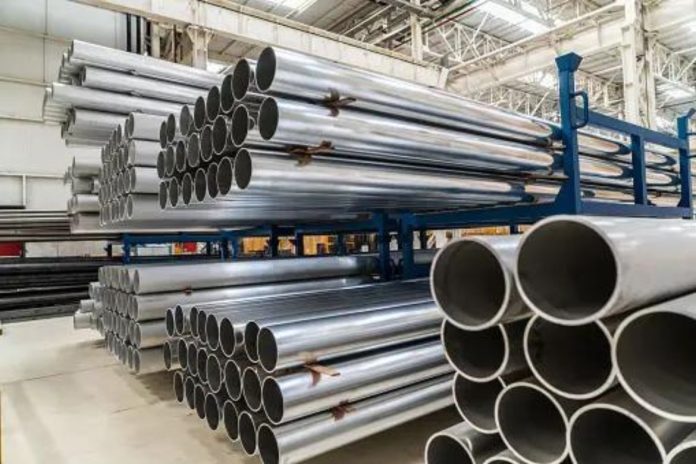Choosing the right stainless steel tube for your project is crucial to ensuring the durability, efficiency, and safety of your systems. Stainless steel piping is known for its strength, corrosion resistance, and versatility, making it an excellent choice for a wide range of applications. However, with various grades, sizes, and types available, selecting the appropriate stainless steel tube can be daunting. In this blog, we will guide you through the essential factors to consider when choosing stainless steel tubing for your project, helping you make an informed decision that meets your specific needs.
Understanding the Basics of Stainless Steel
Before diving into the specifics of choosing a stainless steel tube, it’s important to understand what makes stainless steel unique. Stainless steel is an alloy composed primarily of iron, with a minimum of 10.5% chromium content. This chromium creates a passive layer of chromium oxide on the surface, which prevents rust and corrosion. Additional elements such as nickel, molybdenum, and nitrogen can be added to enhance specific properties like strength and corrosion resistance.
Factors to Consider When Choosing Stainless Steel Tube
1. Application and Environment
The first step in selecting the right stainless steel tube is to consider the application and the environment in which it will be used. Different environments pose different challenges, such as exposure to chemicals, high temperatures, or marine conditions. For instance:
- Chemical Processing: Requires high resistance to corrosion and chemical attack. Grades like 316 or 316L stainless steel, which contain molybdenum, are ideal.
- High-Temperature Applications: Require materials that maintain strength and resist oxidation at elevated temperatures. Grades like 304 and 321 stainless steel are suitable.
- Marine Environments: Exposure to saltwater demands excellent corrosion resistance. Again, 316 stainless steel is a popular choice.
2. Mechanical Properties
Consider the mechanical properties required for your project, such as tensile strength, hardness, and ductility. The mechanical properties of stainless steel can vary significantly between different grades and heat treatments. Ensure the chosen stainless steel tube meets the mechanical requirements of your application to avoid failures and ensure longevity.
3. Corrosion Resistance
Corrosion resistance is one of the key advantages of stainless steel piping. However, different grades offer varying levels of corrosion resistance. For example:
- 304 Stainless Steel: Offers good corrosion resistance in a wide range of environments, but may not be suitable for environments with high chloride exposure.
- 316 Stainless Steel: Provides excellent resistance to corrosion, especially against chlorides and industrial solvents, making it ideal for harsh environments.
4. Tube Dimensions
The dimensions of the stainless steel tube, including diameter and wall thickness, are crucial for ensuring it fits correctly and performs well under the expected load conditions. Consider the following:
- Outer Diameter (OD): The outer diameter should match the specifications required for your piping system.
- Wall Thickness: Thicker walls provide more strength and durability, but also increase weight and cost. Choose a thickness that balances these factors based on your project requirements.
5. Seamless vs. Welded Tubes
Stainless steel tubes are available in seamless and welded forms. Each has its advantages and specific applications:
- Seamless Tubes: Made from a solid billet of steel, seamless tubes have no weld seam, providing uniform strength and a smooth finish. They are ideal for high-pressure applications and are preferred in industries such as oil and gas.
- Welded Tubes: Formed by rolling a sheet of stainless steel into a tube shape and welding the seam. Welded tubes are generally more cost-effective and have excellent corrosion resistance. They are suitable for low to medium pressure applications.
6. Certifications and Standards
Ensure that the stainless steel tubes you choose comply with relevant industry standards and certifications. Standards such as ASTM, ASME, and ISO define the chemical composition, mechanical properties, and dimensions of stainless steel tubes. Compliance with these standards ensures the quality and reliability of the tubing.
7. Supplier Reputation and Support
Choosing a reputable supplier is crucial for obtaining high-quality stainless steel tubing. Look for suppliers with a proven track record, positive customer reviews, and the ability to provide technical support. Reliable suppliers like Ibex Australia offer comprehensive support, including material selection advice, technical documentation, and after-sales service.
Benefits of Stainless Steel Piping
Stainless steel piping offers numerous benefits that make it an ideal choice for various industrial applications:
- Durability: Stainless steel piping is highly durable and can withstand extreme temperatures and pressures, ensuring long-term performance.
- Corrosion Resistance: The inherent corrosion resistance of stainless steel makes it suitable for use in harsh environments, reducing maintenance costs and downtime.
- Hygiene: Stainless steel’s non-porous surface prevents the growth of bacteria and other pathogens, making it ideal for applications in the food and beverage industry and healthcare facilities.
- Aesthetic Appeal: Stainless steel has a modern and sleek appearance, making it a preferred choice for architectural and decorative applications.
- Recyclability: Stainless steel is 100% recyclable, contributing to environmental sustainability and reducing the carbon footprint of industrial projects.
Conclusion
Choosing the right stainless steel tube for your project involves careful consideration of various factors, including the application environment, mechanical properties, corrosion resistance, dimensions, and the choice between seamless and welded tubes. By understanding these factors and working with a reputable supplier, you can ensure that your stainless steel piping system meets the demands of your specific application and delivers long-term reliability and performance.
Remember, investing time in selecting the right stainless steel tube will pay off in terms of efficiency, safety, and cost savings in the long run. Choose wisely and ensure your project stands the test of time with high-quality stainless steel tubing.









